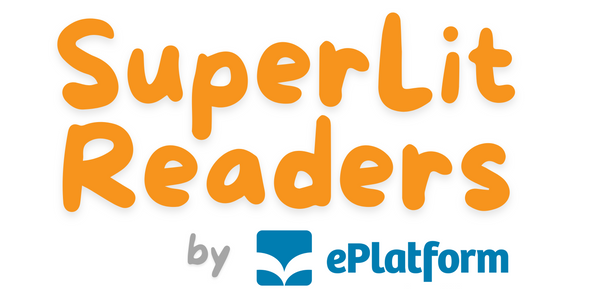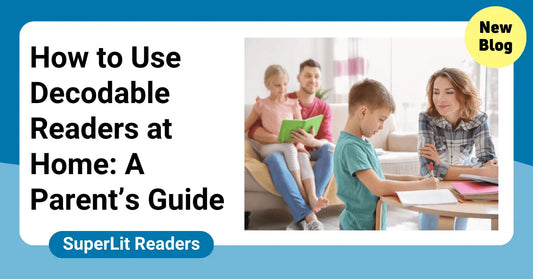SuperLit Readers by Reading Level
A Step-by-Step Guide Through All 10 Phonics Stages
Whether you're a teacher, parent, or literacy leader, understanding the SuperLit Readers levels helps you choose the right book at the right time. Our 10-level system is built around systematic synthetic phonics, supporting early readers as they move from single sounds to full fluency.
In this guide, we’ll walk through each SuperLit level — what it covers, who it’s for, and how it supports decoding and comprehension every step of the way.
Table of Contents
- How the SuperLit Levels Work
- Levels 1–2: Beginner
- Levels 3–4: Growing
- Levels 5–6: Developing
- Levels 7–8: Confident
- Levels 9–10: Independent
- How to Choose the Right Level
- Final Thoughts

1. How the SuperLit Levels Work
Each SuperLit level follows a clearly structured phonics progression. Students only encounter words that align with what they’ve already been taught. This means every book reinforces decoding skills, not guessing.
There are 10 levels in total, with fiction and nonfiction options at every stage. Levels are grouped into five developmental bands:
- Levels 1–2: Beginner
- Levels 3–4: Growing
- Levels 5–6: Developing
- Levels 7–8: Confident
- Levels 9–10: Independent
2. Levels 1–2: Beginner
These books focus on single-letter phonemes and short CVC (consonant-vowel-consonant) words using early sounds like /s/, /a/, /t/, /p/, /i/, /n/.
- Ideal for: Pre-foundation, Foundation, or students new to phonics
- Approx. word count: 20–140 words per book
- Includes basic repetition and high-picture support
3. Levels 3–4: Growing
Readers are introduced to digraphs and blends such as /sh/, /ch/, /th/, /ng/, /bl/, and /st/. Texts become slightly longer with controlled vocabulary.
- Ideal for: Students who know most single sounds and are blending simple words
- Approx. word count: Up to 400 words per book
- Fiction and nonfiction topics to expand engagement and vocabulary
4. Levels 5–6: Developing
Books introduce more complex vowel patterns such as /ai/, /ee/, /igh/, and /ar/, as well as some multisyllabic words and compound words.
- Ideal for: Students who can read blends and digraphs and are ready for new phoneme-grapheme correspondences
- Approx. word count: Up to 800 words per book
- Stories and facts designed to promote fluency and confidence
5. Levels 7–8: Confident
These levels include advanced spelling patterns, alternative graphemes, and more complex sentence structures. Students begin tackling richer texts.
- Ideal for: Readers transitioning into higher-level decoding and comprehension
- Approx. word count: Up to 1000 words per book
- Topics span science, social studies, and narrative storytelling
6. Levels 9–10: Independent
These final levels mirror real-world reading. Books feature multisyllabic words, irregular spellings, and a variety of text types including argument, explanation, and narrative.
- Ideal for: Fluent readers who are nearly ready for trade texts or novels
- Approx. word count: Up to 1200 words per book
- Vocabulary and content reflect upper primary expectations
7. How to Choose the Right Level
The best way to choose a starting level is by assessing which phonemes a student already knows. Use the Scope and Sequence to match skills to the right book.
You can also group students by reading behaviors:
- Still learning basic sounds → Start with Level 1 or 2
- Blending with digraphs → Try Level 3 or 4
- Fluent with short words → Begin at Level 5 or above
8. Final Thoughts
With a clear structure and step-by-step progression, SuperLit Readers make it easy to match every student to the right book. From beginner to independent, each level builds confidence, fluency, and a love of reading — one sound at a time.
📘 Ready to get started? Explore our fiction and non-fiction bundles
🧠 Need a teaching roadmap? Download our phonics Scope and Sequence
🎯 Want to learn more about Phonics? SuperLit Readers Blog
— Happy Reading!






